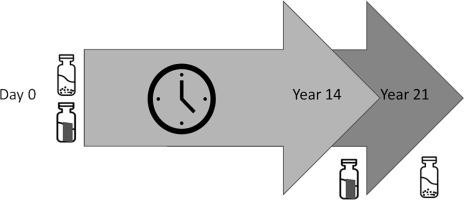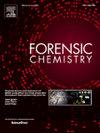Hydrocarbon retention on activated carbon: Preservation of fire debris evidence
Abstract
Fire debris is collected and analyzed to determine whether volatile hydrocarbons of ignitable liquids (IL) are present. Typically, the hydrocarbons from fire debris are separated from the debris by adsorption onto activated carbon. Laboratory generated fire debris were sampled by adsorption onto activated charcoal strips (ACS) where half of the ACS was analyzed by gas chromatography – mass spectrometry (GC–MS) and the other half was preserved for 14 years [1,2]. Reference ignitable liquids are important in the detection and identification of ignitable liquid residues (ILR) from fire debris [3]. Reference IL contain 400 µl of IL adsorbed onto 0.5 g of granular activated carbon (GAC) and were preserved for 21 years. Comparisons of the chromatographic profiles at Day 0 and Year X (X = 14 or 21) were performed by Spearman rank correlation of selected peak’s intensities and visual inspection to determine how well these samples were preserved. The fire debris samples on ACS had an average Spearman rank correlation coefficient of 0.90 with a standard deviation of 0.11. Thirty-six percent of them demonstrated no change in the chromatographic profile and 64 % of them demonstrated minimal desorption in the chromatographic profile. The GAC samples had an average Spearman rank correlation coefficient of 0.95 with a standard deviation of 0.12. Eighty-two percent of them demonstrated no change in the chromatographic profile. This study reveals that hydrocarbons of ignitable liquids on activated carbon following established preservation procedures remain useful for forensic purposes after long-term storage.


 求助内容:
求助内容: 应助结果提醒方式:
应助结果提醒方式:


